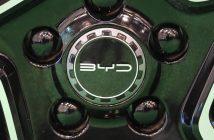+++ BYD has launched an updated version of its sedan, named Han and SUV, named Tang. The main changes are adding new ADAS to the top trim level and updating it to 620 Volt charging. Its peak charging power increases from 120 kW to 155 kW. The Han can now charge 30-80% in 25 minutes. Prices are 14% down from the previous version. The Han dimensions are unchanged at 4.995 x 1.910 x 1.495 mm with a wheelbase of 2.920 mm. The Tang, a 7-seater, has dimensions of 4.870 x 1.950 x 1.725 mm and the wheelbase is 2.820 mm. A 50 Watt smartphone wireless charging pad is inside the car and the front seats have a massage function. BYD is signaling to the market that it has deep pockets enough to send all its 2024 models into the price war. Moreover, the advantage of vertical integration is also doing its job. There are currently 100 makers of electric cars in China, and many of them will start losing wheels in 2024 as even with fair enough product and great tech inside, you can sell at a loss only for a limited amount of time, especially if you are a small startup. Also, slow DC charging has always been one of the drawbacks for BYD, so it is good to see some improvement in this area. +++
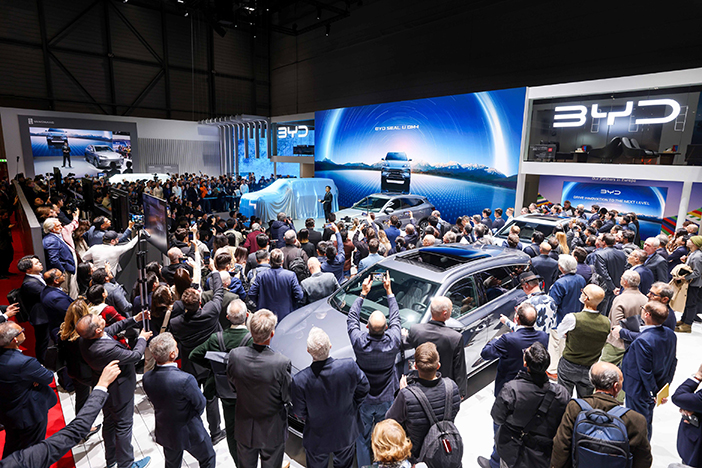
+++ The century-old GENEVA MOTOR SHOW is back in action for the first time in 5 years and organizers are desperately trying to rev up its fortunes. The show skidded off track in 2020 (canceled at the last minute because of the coronavirus outbreak) and had been stalled until now. A handful of automakers, including fabled British brand MG, France’s stalwart Renault and Chinese upstart BYD (which has been taking the global market by storm) are hoping to inject some new va-va-voom into the Geneva showroom with an array of enticing electric vehicles. Organizers say they hope they can be an antidote for hard times for Geneva car lovers. But to be honest, the show is a shadow of its former self. There are still some really exciting cars there. But you can count them on one hand. It’s just disappointing more than anything because Geneva was the greatest car show. But it frankly isn’t anymore.
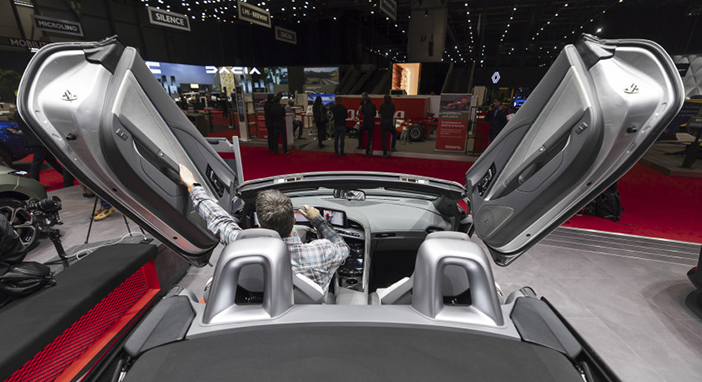
Here’s a look at some of brands and vehicles hoping to stir excitement: MG has rolled out its electric Cyberster: Think classic roadster with a high-tech upgrade. The British automaker, known for 2-seat convertibles with a high coolness quotient, serves this vehicle up with scissor doors and rear haunches that convey power. Its dual-motor version and all-wheel drive configuration allows it to go from 0 to 100 km/h in 3,2 seconds, making it the fastest-accelerating and most powerful production car yet at MG.
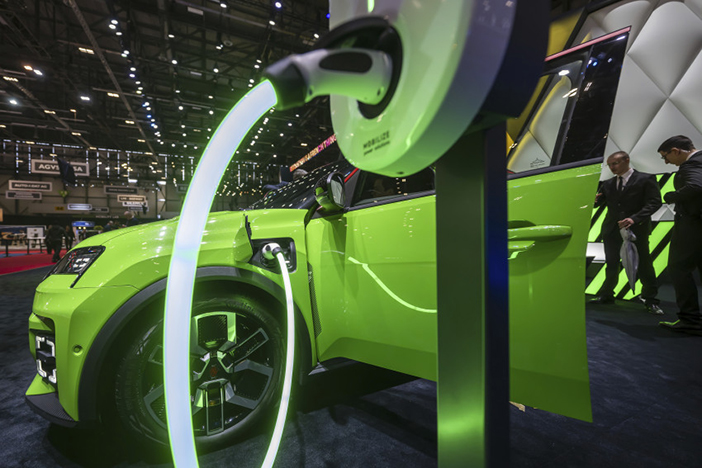
Also present is the Renault 5 E-Tech. This flashy, sleekly designed electric car is an retro-inspired reimagining of the popular hatchback that (long since retired) had its premiere over a half-century ago, in 1972. Any middle-aged French person knows the nostalgia of the once-ubiquitous R5, whose short-lived American cousin was called “Le Car” before Renault quit the U.S. market decades ago. “The 5 was a car of the fuel generation, coming in tough times: it was a crisis of … petrol prices and the idea was that the 5 was the answer. It has been the car of a whole generation”, said Christian Stein, a Renault vice president for customer experience. “Our ambition is very simple, to make a similar step with this brand-new car”. The 5 E-Tech will sell with 2 battery options, including one with a capacity of 52 kWh, delivering a range of up to 400 kilometers. Renault will roll it out first on the European markets later this year.
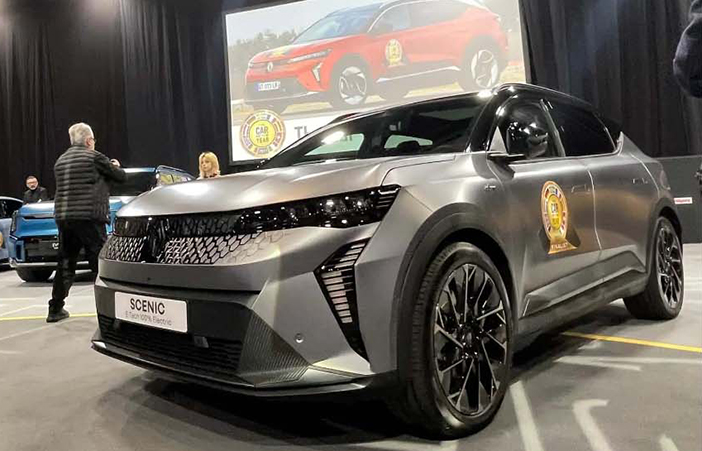
On Monday, Renault’s Scénic E-Tech took home “Car of the Year” honors in a vote by a panel of automotive journalists. Other finalists were the BMW 5-series, Volvo EX30, Kia EV9, Peugeot (E-)3008, Toyota C-HR, and the BYD Seal; the first time the Chinese automaker made the final cut.
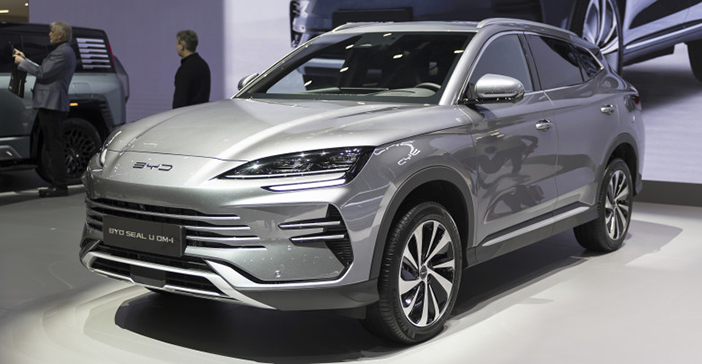
BYD, which dethroned Tesla as the top seller of electric cars late last year, is showcasing a range of EVs headed to European markets, including its Seal U electric SUV (photo). The automaker is also showcasing the U8 hybrid SUV from its luxury brand Yangwang. BYD is the brand on carmakers’ lips these days, automotive analysts say, and it has been omnipresent at auto shows. They say European carmakers (many of which are sitting out the Geneva show) fear the competition from BYD vehicles that have have improved looks and handling, and a lower price tag. Only about 5 major automakers are attending the show this year, and organizers say a total of 15 world and European premieres are taking place; a fraction of the 140 debuts 5 years ago. Top luxury brands Ferrari, Lamborghini, Aston Martin and Porsche aren’t on hand. Geneva show organizers hosted a show in Qatar in the fall, where big-name brands sought buyers and attention in oil-rich Persian Gulf states. The return home comes a century after the first Geneva International Motor Show, and after more than 600.000 visitors turned out in 2019. +++
+++ Huawei isn’t buying HIPHI but Changan is the new suitor for the troubled car company and this time there’s a lot more credibility in the story. Ding Lei, CEO and founder of HiPhi paid a visit a few days ago to Changan, presumably the headquarters in Chongqing. Previously, Ding Lei has said that there is only a 3 month window to turnaround HiPhi as a going concern and he has reportedly been working tirelessly to achieve this, having little sleep. Earlier this month HiPhi announced that it was ceasing production for 6 months and that employees remaining with the company after March 15 would be paid only the minimum salary dictated by Shanghai regulations. Internet rumors claim that Changan will buy a 51% stake in HiPhi and that together with cash injections from Qingdao and Saudi Arabia it will be enough to shore up the books of the company to keep HiPhi going as a brand. Zhu Huarong, chairman of Changan Automobile, responded to media questions saying: “We are talking, but we are far from ‘proper’ ”. An insider at Changan confirmed that Ding Lei and his team visited Changan, but said the Internet rumors were not true. “They did hope that Changan would consider acquisition at this time, but the acquisition ratio and details reported on the Internet are fake, it is impossible to finalize such details in one trip”, said the unnamed insider. During the Changan visit inspections of the respective brands cars and test drives were undertaken. On February 22nd, HiPhi released the “Announcement on Recent Service Operation Guarantee” on its official App. HiPhi said that during this period it was prioritizing user’s service operation, vehicle after-sales maintenance and other related work. However work on HiPhi’s charging infrastructure is suspended this includes operation of existing chargers, the installation of new chargers, and the use of the charging app (including free charging) with it set to recommence only when follow-up resources are in place. Changan is a large state-owned enterprise which has largely been known for sales of what Chinese refer to as bread vans (minivans to the rest of us). The company also currently has joint ventures with Ford and Mazda. In recent years it has started having some success with its own brands of new energy vehicles. These consist of Changan Nevo for the lower priced segment, Deepal for more mid-range and Avatr as a premium brand. It should be noted that the price of Avatr models are nowhere near as high as HiPhi. Changan is gaining ground and is a company that, despite high sales as a auto producer, has never really got much notice. That thanks to electric vehicles, this is beginning to change. The Avatr range in particular has made waves. HiPhi would not be completely out of place under Changan stewardship. The Avatr range uses Huawei’s system for its autonomous driving which is an area that HiPhi never seems to have seriously tackled. HiPhi cars getting the Huawei tech would make them far more appealing. +++
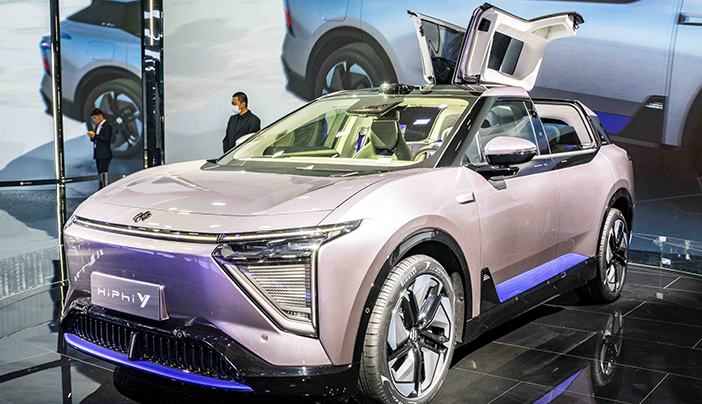
+++ Spy shots of the HONGQI EH7 offer a glimpse into the first new energy sedan based on Hongqi’s new FMEs architecture. The pictures were taken at a Changchun dealer in China. It has been speculated it will be released in both a battery-swapping version and a long-range fast-charging variant, with a maximum range of up to 800 kilometers. The EH7 is expected to hit the market soon. The electric vehicle is built on a chassis measuring 4.980 x 1.915 x 1.490 mm, and a wheelbase of 3.000 mm, with a curb weight of 2.254. The RWD version will be fitted with a 253 kW motor manufactured by FAW, with a ternary battery from CATL. This version will be equipped with 245/50 R18 tires. The AWD version also utilizes CATL’s ternary battery, paired with 2 motors: a 202 kW motor on the front axle and a 253 kW motor on the rear axle, both manufactured by FAW. This variant will include a choice between 245/45 R19 and 265/40 R19 tires. The car’s top speed is noted at 190 km/h. Hongqi is also working on another electric model, the EHS7. It is also based on the FMEs architecture. Hongqi may even call the EHS7 the EH7 Cross. According to the previous information, the EHS7 will enter the Chinese market in March or April this year as Hongqi wants to keep up with the EV trend. China First Automobile Works (FAW) declared that the Hongqi brand achieved a retail sales breakthrough of 370.000 units in 2023, indicating a year-on-year growth of 29.5%. Notably, the retail sales of New Energy Vehicles (NEVs) surpassed 85.000 units, marking a remarkable year-on-year growth of 135%. Hongqi’s current lineup of new energy products includes the large SUV named E-HS9. It is worth noting that Hongqi independently developed an electric prototype vehicle that achieved a braking distance of 29.68 meters at a speed of 100 km/h at the Hainan Qionghai test track late last year, setting a new world record for the braking distance of electric vehicles. +++
+++ It’s either apples or cherries when it comes to the I-CAR . The day after Apple in the United States announced it was ceasing work on the so called iCar, Chery in China launched the iCar 03. And while Apple lost confidence, Chery seems to think it can sell 10.000 a month. The iCar 03 adopts an all-aluminum multi-chamber cage body structure. Length, width and height of the new car are 4.406 x 1.910 x 1.715 mm and the wheelbase is 2.715 mm. It is available with either 18 or 19 inch wheels. Chinese media are aptly referring to the storage box on the back as a school bag. In line with proper off roaders, the tail door is side opening and has electric suction closing. All models come equipped with automatic headlights, automatic wipers, the rear external storage, a roof rack, an electronic parking brake, 6-way electric seat for the driver, dual-zone automatic airconditioning, tire pressure monitoring, ESP, a 15.6 inch central control screen and a 8 speaker sound system. Mid-range models add folding side mirrors, a 1.2 meters square panoramic sunroof, NFC key, 50W wireless charging, panoramic image, a Qualcomm 8155 chip to control the in car features and a dashcam. The high-end versions gain a heated steering wheel, seat heating, memory function, electric passenger seat, side curtain airbags, 12 speaker sound system, 64-color ambient lighting, driver’s seat massage and ventilation and passenger electric leg rest. High end versions will have a camera based L2+ intelligent driving assistance system. It will allow route memory, highway NOA (navigation on autopilot), intelligent parking and some other functions. The single motor version provides 184 hp to the rear axle with peak torque of 220 Nm. Meanwhile, the 4-wheeldrive version has a maximum power of 279 hp, a peak torque of 385 Nm and is good for a 0-100 km/h acceleration time of 6.5 seconds. At the press conference, Zhang Hongyu, deputy general manager of Chery Automobile and general manager of the iCAR brand division, said that Chery was targeting both sales of 10.000 a month and a $1.400 profit on each car. Also mentioned at the press conference was that iCar would sell other categories of cars and not just SUVs with more to be announced at the Beijing Auto Show. Certainly at last’s year’s Shanghai Show there was an iCar GT concept shown. +++
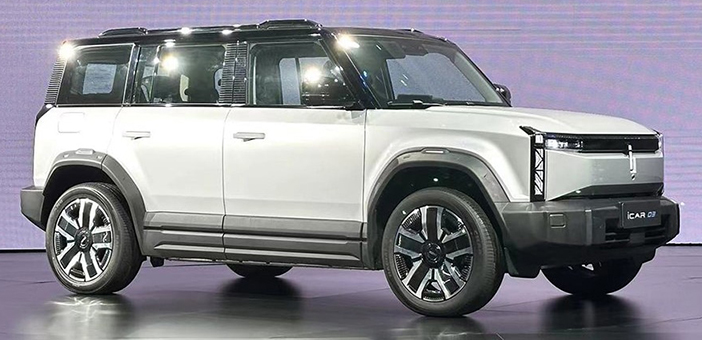
+++ The KIA NIRO has reached a milestone by surpassing 1 million global sales in 8 years after its launch, primarily fueled by the popularity of its hybrid model. According to Kia, the Niro tallied 1.082.822 units in global sales by January this year. Initially unveiled as a hybrid vehicle in 2016, the Niro broadened its eco-conscious offerings with a plug-in hybrid variant in 2017 and an all-electric model in 2018. The lineup recorded over 44.000 units in its first year, doubled to over 100.000 annual sales the following year and after a 2019 facelift, sales soared to 130.000 units annually. Year after year, the Niro has seen sales increases for 5 straight years. The 2022 launch of the second-generation Niro, featuring enhanced fuel efficiency and sustainable materials, attracted over 16.000 pre-orders on its debut day, leading to sales of 169.992 units for the year. The Niro has enjoyed great success internationally, particularly in Europe, where it accounted for more than half of its outside sales, totaling 466.112 units. +++
+++ Chinese SAIC-owned MG presented 2 high-end electric models at the Geneva Motor Show: the MG 9 liftback and the MG S9 fastback SUV. They are based on the F7 and R7 cars, available in the Chinese market under Rising marque, also owned by SAIC. 2 models from the sister brand will help MG to enter the new market segment, boosting sales. It is also good for Rising, whose domestic sales volume is low. MG is a former British brand currently owned by Chinese automotive giant SAIC Group. As the MG name is still well-known overseas, SAIC uses it as a driving force for its overseas sales. The Chinese automaker often rebadges its models to the MG brand. The recent examples are Wuling Air EV (MG Comet), Maxus T70 (MG Extender), Roewe Ei5 (MG 5), and Roewe Marvel R (MG Marvel R). Soon, 2 more models from the Rising brand will enhance the MG line in the overseas markets. Rising was initially a series of electric vehicles under the SAIC-owned Roewe brand. In 2020, this series turned into an independent brand. Nowadays, its domestic model line comprises 2 models: the R7 fastback SUV and the F7 liftback. However, its sales volume is low in China. Last year, Rising barely sold 21.012 cars. For clarity, Xpeng delivered over 121.000 units and Nio sold more than 160.000 EVs. The high price is the main reason for the low demand for Rising vehicles among Chinese customers. Recently, Rising joined the price war in China, offering discounts and revised trim levels of its cars. Soon, Rising vehicles will hit overseas markets as a part of the MG brand. They will compete with other Chinese high-end electric cars, including Zeekr, Xpeng and Nio.
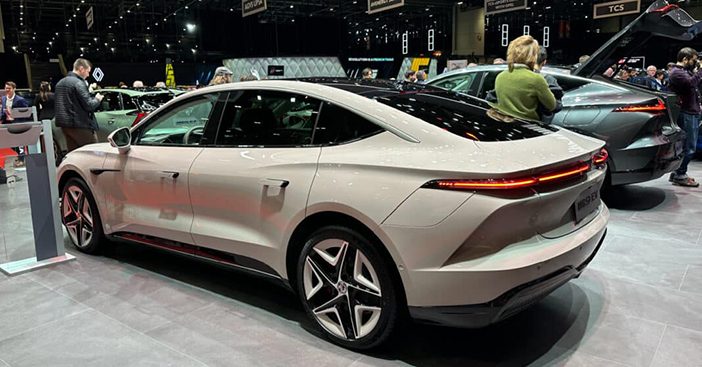
The MG 9 is a large electric liftback with sleek styling and a drag coefficient of 0.206 Cd. It is a rebadged Rising F7 that entered the Chinese market in March last year. It has thin running lights, retractable door handles and a coupe-like body shape. Its dimensions are 5.000 x 1.953 x 1.494 mm with a wheelbase of 3.000 mm. For comparison: the MG 9 is 10 mm longer, 7 mm narrower and 84 mm higher than the Audi e-tron GT. Inside, the MG 9 has a screen resembling the Mercedes-Benz MBUX multimedia system. It isn’t a solid monitor but 3 screens under a glass panel. The instrument cluster has a diameter of 10.25 inches, the main screen offers 15.05 inches and the front passenger monitor’s diameter is 12.3 inches. There is one more 8 inch screen for the rear passengers. The MG 9 has a D-shaped steering wheel with a gear shifter mounted behind it.
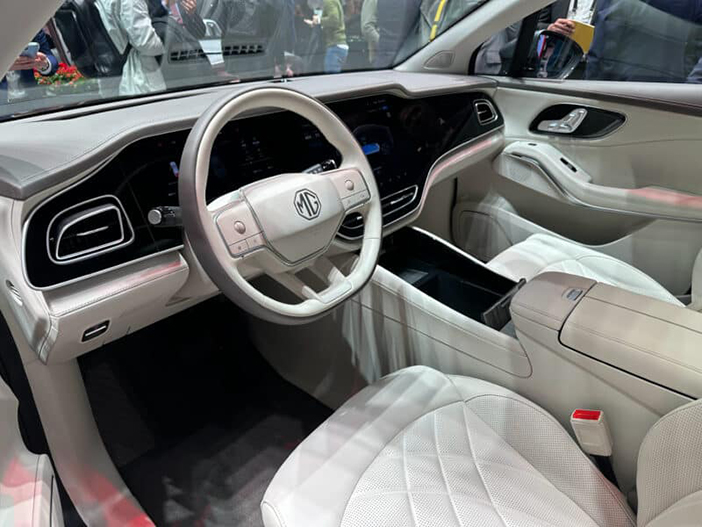
The powertrain of the MG 9 is likely similar to the Rising F7. Its entry-level variant has a single electric motor in the rear axle for 250 kW powered by a 64 kWh LFP battery, good for a 500 km range (optimistic CLTC measure). The second version has the same e-motor mated with a 77 kWh ternary NMC pack for 602 km. There is also a long-range modification with a battery for 90 kWh and a range of 702 km. There is a 4WD performance variant with 2 electric motors for 400 kW and a 90 kWh battery for the 632 km range. In China, the Rising F7 supports battery swap technology. According to official information, Rising-branded battery sap stations can switch batteries in 90 seconds. However, Rising has around 50 stations across China, which is clearly a miserable quantity compared to Nio, which has 2.375 Power Swap Stations. The price of the MG 9 for the European markets has yet to be released.
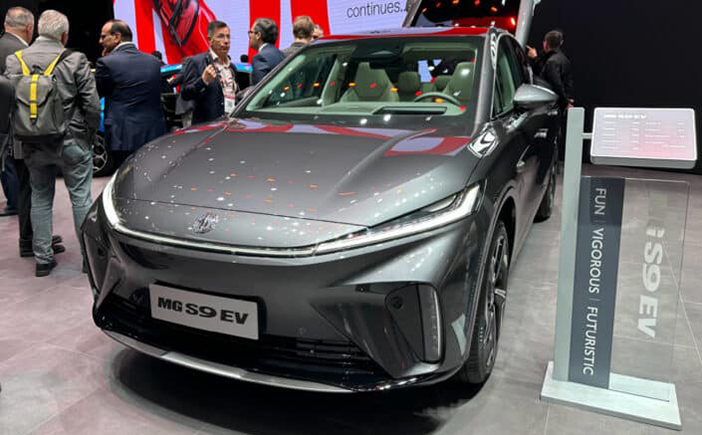
The MG S9 is a mid-sized fastback crossover based on the latest variant of the Rising R7. Its front end looks similar to the MG 9. It also has a sleek roofline, frameless doors and thin DRLs. The dimensions of the MG S9 are 4.900 x 1.925 x 1.655 mm with a wheelbase of 2.950 mm. For clarity: it is 149 mm longer, 4 mm wider, and 26 mm higher than the Tesla Model Y. The interior of the MG S9 also has MBUX vibes with a triple-screen. But it additionally has an augmented reality heads-up display from Huawei. The MG S9 has RWD and 250 kW with 536 km LTP range. Its twin brother, Rising R7, has a single electric motor for 250 kW in the rear axle as standard. It is powered by a 77 kWh ternary NMC battery for a 570 km range (CLTC). There is also a long-range variant with a 90 kWh battery for a 670 km range. Previously, the Rising R7 had a 4WD version with 400 kWh and a 90 kWh battery for 606 km. However, it was discontinued due to a high price. The price of the MG S9 is unknown. SAIC co-owned IM brand is also set to rebrand its models as MG for the European and South American markets. +++
+++ NISSAN said Wednesday it plans to offer mobility services using Level 4 self-driving vehicles from fiscal 2027 in Japan, including rural areas where providing financially sustainable public transportation is becoming increasingly difficult. The Japanese automaker will begin a trial service in Yokohama, where the company is based, during the fiscal year from April and expand it in stages using 20 or so vehicles before the start of commercial services, it said. In the trials, Nissan will use Serena minivans equipped with self-driving technologies, with a driver aboard to respond to any emergencies. Those wishing to use the service will be able to reserve in advance through a smartphone app. “We want to support Japan’s future mobility needs using Japanese technologies. We are aiming for sustainable services”, Kazuhiro Doi, vice president of research, told reporters. Honda and General Motors said in October they will launch a driverless taxi service joint venture that will be operational by early 2026 in Tokyo. +++
+++ The French Ambassador in South Korea, Philippe Bertoux, along with key officials from the embassy, visited RENAULT ’s Busan plant Friday. The ambassador toured the main facilities of the Busan plant, which the company said attained the highest level of production quality among all Renault Group plants worldwide. Renault Korea is responsible for the development and production of high-end D and E segment vehicles as one of five global hubs for the global market outside of Europe under the French automotive group’s “Renault Brand International Game Plan” strategy, it said. D segment vehicles mainly refer to mid-size family cars, while E segment automobiles are full-size executive sedans. “Seeing the Korean national flag and the French flag hanging together inside the Busan plant was a powerful reminder that Renault Korea is playing an important role in both Korea and France. After experiencing the Busan plant, which is producing amazing results, expectations for the success of Renault Korea’s Aurora project also increased”, Bertoux said. Renault Korea intends to introduce a range of electrified models to both domestic and overseas markets through its project Aurora, which is dedicated to developing the next generation of eco-friendly vehicles. A hybrid D SUV, scheduled to be launched in the second half of this year as the first model of the Aurora project, will be launched as a new model rather than a successor to Renault Korea’s existing vehicles. +++
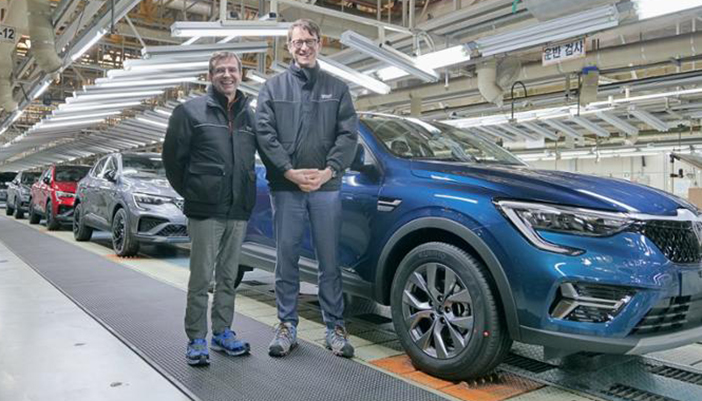
+++ TOYOTA said Wednesday its domestic sales for January fell for the first time in 13 months as a data-rigging scandal at its small-car unit Daihatsu led to a production halt of some Toyota brand cars the unit made. The number of cars Toyota sold in Japan slipped 13.7 percent from a year earlier to 112.425 units as the supply of cars the automaker commissions Daihatsu to make dwindled, Toyota said. Its sales outside of Japan rose 15.9 percent to 672.102 cars, helped by robust demand in North America, pushing its worldwide sales up 10.5 percent to 784.527 units. Both figures are a record high for the month of January, according to Toyota. Daihatsu stopped all its domestic production on December 26 after revealing that a third-party panel found that it had rigged safety testing data for most of its models. The unit did not build any cars in January. Toyota’s overseas production grew 9.5 percent to 522.851 units, also a record high for January, as strong demand in the United States and Canada coupled with an easing chip shortage resulted in a 22.0 percent increase in the region. Domestic production rose 2.8 percent to 217.481 vehicles, while global output increased 7.4 percent to 740.332 units. Toyota also said it will fully resume domestic production Monday by restarting the remaining 2 production lines at 2 of its factories in Japan that have been stopped due to another data-rigging scandal at its affiliate Toyota Industries Corp. The world’s biggest automaker group has been hit with quality issues in recent years, which prompted Toyota chairman Akio Toyoda to apologize and vow to strengthen governance for the group last month. Combined domestic production at Japan’s 8 major automakers fell 6.3 percent in January from a year earlier to 548.912 vehicles due to the production halt at Daihatsu, data from the 8 carmakers showed Wednesday. The 8 auto manufacturers built a total of 1.98 million vehicles in January worldwide; up 6.4 percent from the same month last year, while their combined global sales increased 10.6 percent to 1.96 million vehicles. +++


